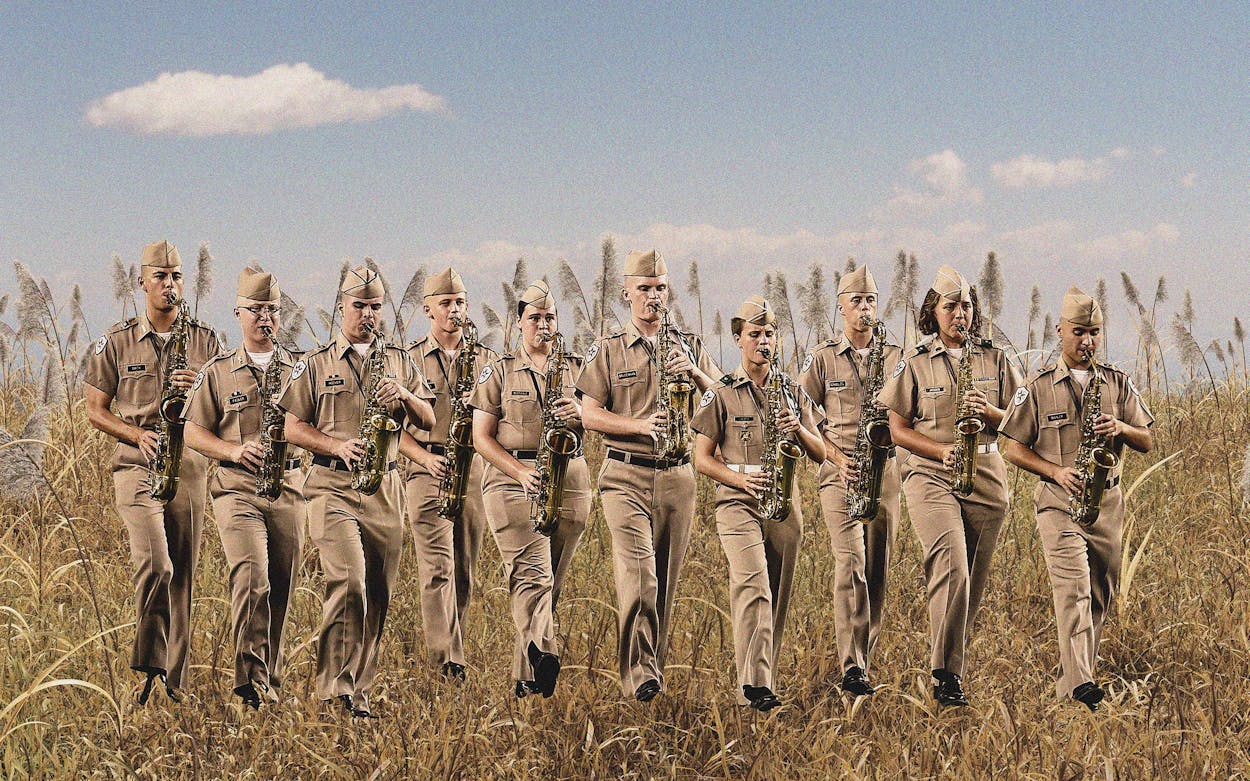It’s not easy being an Aggie these days. The football program is an SEC bottom-feeder. The university’s reputation has been tarnished by back-to-back scandals over academic freedom and political meddling. And TAMU’s beloved traditions serve as occasional fodder for cringe content on the internet. If all that wasn’t enough, the Guardian, one of the most heavily trafficked news sites in the world, recently described Texas A&M as “a military school in the Lone Star hinterlands,” which is a really funny and unintentionally (we assume) rude way to describe one of Texas’s flagship universities, as if TAMU was an obscure training camp located in some remote backwater. (Yes, I know, I know—the Aggie jokes write themselves.) In any case, the Guardian’s description has folks across Aggieland alternately guffawing, rolling their eyes, and—most amusing to me, a proud Longhorn—somewhat agreeing! Whoop!
And, of course, jokes were made at the expense of the Aggies:
The description of A&M appears in a review of the new Netflix documentary about former Aggie quarterback Johnny Manziel, another problematic brand ambassador for the university. Describing a public tier-one research university as a “military school in the Lone Star hinterlands” is a bit like describing Harvard as a finishing school for ministers located in an agricultural area near Boston. Perhaps the Guardian reviewer was in a rush and didn’t read past the history section of the TAMU write-up on Wikipedia. Yes, Texas A&M was an all-male military academy for much of its history. But membership in the Corps of Cadets hasn’t been compulsory since 1964, and today only about 2,100 students, out of 75,000, are members of the uniformed group. To outsiders, and perhaps to many of the so-called Two Percenters, the supposedly tiny minority of the student body that doesn’t participate in the campus folkways, TAMU may at times feel like a quasi-military school, given the outsized role of the Corps and Aggieland’s many baroque traditions such as Fish Camp, Muster, Midnight Yell, and the Aggie Ring.
But is TAMU in the “Lone Star hinterlands”? If “hinterlands” means, as we say in Texas, “the sticks” or “the middle of nowhere,” then, no, not really. The Bryan–College Station area has 278,000 residents and—here I am quoting Wikipedia—is “centrally located within 200 miles (320 km) of three of the 10 largest cities in the United States and 75 percent of the Texas and Louisiana populations.” If College Station is located in the hinterlands, then so is the University of Oxford and its host city, Oxford (population: 162,100).
Still, dodgy facts aside, the Guardian seems to have proved that perception is reality. While some were annoyed at the article, plenty of others who normally disagree—both red-ass Aggies clinging to tradition and reformers exasperated by TAMU’s stubborn self-regard—were in agreement: Texas A&M is a “military school in the Lone Star hinterlands.”
- More About:
- Politics & Policy
- Aggies
- College Station








